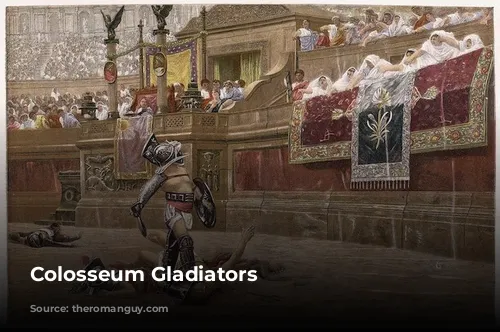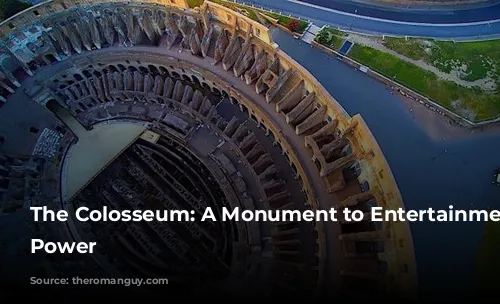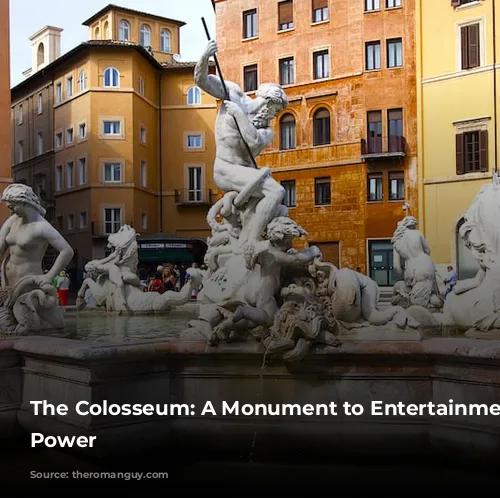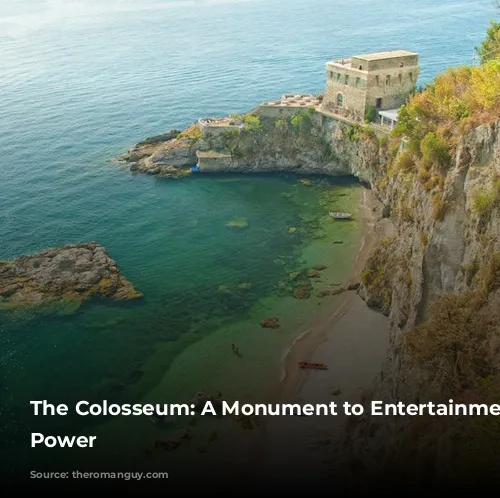The Colosseum, one of the most iconic structures in the world, is a testament to the grandeur and power of Ancient Rome. But why was this massive amphitheater built?
The Colosseum was constructed for a variety of reasons, both practical and symbolic. Controlling the volatile crowds of Rome was a key motivation. The Colosseum provided a safe and controlled environment for public gatherings, replacing the previous wooden structures that were prone to fires.
Furthermore, the Colosseum was a powerful political tool. Roman senators used it to garner public support, staging lavish spectacles that entertained the masses and cemented their power.
A Symbol of Roman Might
Beyond its practical applications, the Colosseum was also a symbol of Roman strength and dominance. Imagine the scene: tens of thousands of spectators, their anticipation palpable, waiting for the spectacle to begin. The roar of the crowd as gladiators entered the arena, their lives on the line, would have been a powerful display of Roman might.
The Colosseum: A Product of its Time
To understand why the Colosseum was built, we must delve into the context of Ancient Rome. Life in ancient Rome was far from idyllic. The common man lived a harsh existence, toiling from dawn till dusk, with no concept of weekends.
The Roman emperors realized that to maintain control, they needed to keep their subjects content. The phrase “Bread and Circuses” aptly describes this strategy. By providing basic necessities and lavish entertainment, the emperors kept the populace distracted from potential rebellions.
Construction of a Monument
In 72 AD, after conquering Jerusalem and acquiring immense wealth and slaves, Emperor Vespasian Flavian decided to construct the Colosseum. He envisioned a massive amphitheater that would awe and entertain his subjects, ensuring their loyalty and supporting his expansionist ambitions.
Vespasian’s reign was marked by unrest and instability. He had become emperor amidst a tumultuous period, following the assassination of Nero and a year of political turmoil. He understood that stability was crucial to maintain control and prevent further upheaval.
The construction of the Colosseum was a massive undertaking. While the precise number of workers remains unknown, it is believed that tens of thousands of slaves toiled tirelessly to build this architectural marvel.
Using travertine, tufa, brick, and wood, the Colosseum was completed in a remarkably short eight years. This magnificent structure has stood for almost 2,000 years, a testament to Roman ingenuity and construction techniques.
A Stage for Blood and Spectacle
The Colosseum served primarily as a venue for gladiatorial contests. These contests were diverse, ranging from animal hunts to group battles and individual duels. The arena also witnessed public executions, a stark reminder of the Roman emperors’ power.
Gladiators, often slaves or criminals, were meticulously trained in gladiator schools. They fought for the entertainment of the Roman public, risking their lives for glory and the cheers of the crowd. Despite the brutality of their profession, gladiators were often revered as heroes and worshipped as idols.
These bloody spectacles continued for over three hundred years, a testament to the enduring fascination with violence and spectacle in ancient Rome.
Exploring the Colosseum Today
Today, the Colosseum stands as a reminder of the past. It is a popular tourist destination, offering a glimpse into the grandeur and brutality of ancient Roman life. While visiting this historical landmark, be sure to explore its fascinating history, marvel at its architectural marvels, and ponder the complex motivations behind its construction.
And if you find yourself in the vicinity of the Colosseum, don’t miss out on the local culinary scene. Enjoy a delicious meal at one of the many restaurants near this iconic landmark, experiencing the vibrant flavors of Roman cuisine.
The Colosseum is more than just a building; it is a symbol of an era, a testament to human ambition, and a reminder of the enduring power of entertainment and spectacle.




